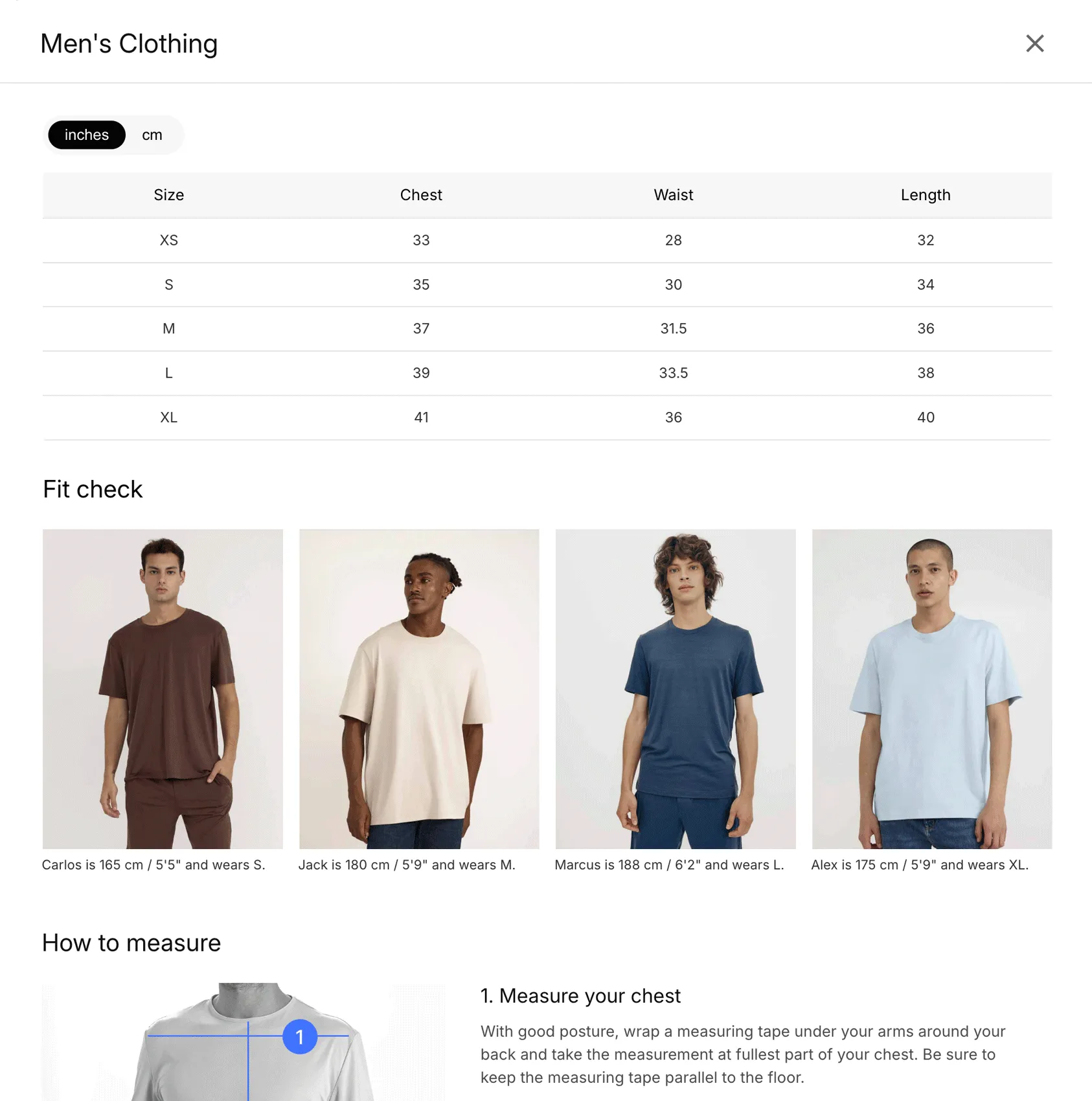eCommerce Returns and ROI Calculator
Our free ROI calculator reveals your potential monthly savings, payback period, and total ROI. See the impact of reducing returns and customer service costs on your Shopify store in under 60 seconds.

How to use this calculator
To get started, simply enter a few key eCommerce metrics from your store. Understanding these inputs is the first step towards improving profitability and reducing eCommerce returns.
Enter your monthly sales:
This is the total revenue your store generates per month. It provides a baseline for understanding the scale of your operations and the potential impact of even small improvements.
Enter your average order value (AOV):
Your AOV is the average amount a customer spends in a single transaction. A higher AOV can significantly boost your profitability. We use this to calculate the value of each returned order.
What's your current return rate?
Enter the percentage of your total orders that are returned by customers. A high return rate is a common challenge that directly impacts your store's bottom line.
What's your expected new return rate?
Be realistic, but optimistic! After implementing a solution like better size charts, what do you hope your new return rate will be? We suggest aiming for a 20-40% reduction to start.
See how much you can save with
CommerceGurus Size Guides
How much are sizing-related returns costing your Shopify store? Calculate your potential savings below.
Your Store Information
Your potential savings
Payback period and ROI calculated based on using CommerceGurus Size Guides Professional plan at $4.99/month ($59.88/year).
Based on your inputs, implementing improved, accessible size guides could save you per year 🚀
Understanding your results: The true cost of returns
The numbers above aren't just data; they represent a real opportunity for your business. Here's a breakdown of what your results mean and how they contribute to your overall eCommerce ROI.
Potential monthly and annual savings
This is the bottom-line improvement you could see by hitting your target return rate. Imagine what you could do with this extra capital: reinvest in marketing, launch new products, or simply increase your profit margin. This is the direct financial benefit of effective returns management.
Payback period and return on investment (ROI)
How quickly an investment in a returns-reduction tool (like our CommerceGurus Size Guides app) can pay for itself. ROI is a crucial metric that shows the total value you get back for every dollar you invest in solving this problem. High ROI means you're making a smart, profitable decision.
References:
- 1. Average order value of $85 for Shopify stores according to Littledata's benchmark study of 2,800+ eCommerce websites.
- 2. eCommerce return rate of 16.9% according to the National Retail Federation's 2024 Consumer Returns Report, which projects $890 billion in total retail returns.
- 3. Return processing costs of $21-$46 per product according to McKinsey research.
Beyond returns: Key metrics for eCommerce success
Reducing returns is just one piece of the puzzle. To build a truly profitable eCommerce business, it's essential to monitor these key performance indicators (KPIs) that measure the health of your entire sales funnel.
Conversion rate
Your conversion rate is the percentage of website visitors who make a purchase. It's one of the most important indicators of your store's health.
Everything from your site speed and product images to your checkout process can affect it. Optimizing for conversions is the fastest way to increase revenue without spending more on advertising.
Customer lifetime value (CLV)
CLV represents the total profit you can expect to earn from a single customer over their entire relationship with your brand.
By providing a great experience (which includes minimizing return hassles and building trust), you encourage repeat purchases to your Shopify store, increase CLV, and build a more sustainable and predictable business.
Customer acquisition cost (CAC)
CAC is the total cost of sales and marketing required to acquire a new customer. It's crucial to compare this to your CLV.
If your CAC is higher than your CLV, your business model is likely unprofitable. Reducing returns improves your profitability per customer, which helps justify your marketing spend and ensures sustainable growth.
Cart abandonment rate
This is the percentage of shoppers who add an item to their cart but leave your site without completing the purchase.
A high cart abandonment rate can signal friction in your checkout process, unexpected shipping costs, or a lack of trust. Just like returns, a high rate is a major source of lost revenue that is often preventable.
Ready to turn these savings into a reality?
You've used our free calculator to see exactly how much you could save annually. The next step is to implement our CommerceGurus Size Guides app for Shopify to make those savings a reality.
Our app makes it simple to create beautiful, accurate, and mobile-friendly size guides for all of your products so you can stop losing money to preventable returns.
Get CommerceGurus Size GuidesStart with up to 3 size charts completely free (no credit card required) or upgrade to unlimited for only $4.99/month. Shopify only.

Frequently asked questions
-
ROI is calculated by comparing your potential annual savings from reduced returns against the cost of our CommerceGurus Size Guides app for Shopify ($59.88/year). The formula is: (Annual Savings - App Cost) ÷ App Cost × 100. Annual savings are determined by multiplying your monthly sales by return rate reduction and average cost per return.
-
All calculations are performed locally in your browser. We do not collect, store, or transmit any of the financial information you enter into the calculator. Your data remains completely private.
-
No, this calculator provides estimates based on your inputs and industry benchmarks. Actual results will vary depending on your specific products, customer base, size guide implementation, and other factors. Consider this a directional tool to help evaluate potential impact.
-
Results depend on product type, customer demographics, quality of size guide implementation, seasonal variations, and how sizing-related your current returns actually are. Size guides primarily address fit issues, not all return reasons.
-
The default values are based on industry research from reputable sources including the National Retail Federation and Littledata's analysis of 2,800+ eCommerce websites. However, these represent industry averages and may not reflect your specific store's performance.
-
Size charts primarily address returns related to fit, sizing, and style expectations - which account for approximately 60-70% of all eCommerce returns according to industry studies. They help reduce returns due to items being too large, too small, or not fitting as expected.
-
The best way is to address the root cause of returns. This includes providing high-quality product photos, writing detailed descriptions, and, most importantly for apparel and footwear, offering accurate and easy-to-use size charts. An effective size chart can virtually eliminate "wrong size/fit" returns.
-
Industry-wide, the top reasons for returns are "wrong size, fit, or color," "item not as described," and "damaged or defective item." The majority of these can be prevented with better on-page information before the purchase.
-
It varies by industry, but a typical return rate for online stores is between 15% and 30%. For clothing and shoe stores, it can be as high as 40%. A "good" rate is one that is consistently decreasing.
